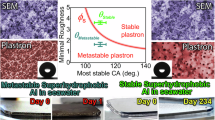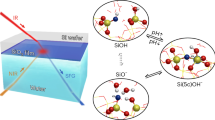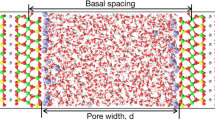Abstract
A METHOD I have devised for the determination of the approximate surface areas of particles involves the determination of the relationship between moisture content (ν) and suction pressure (h). Graphical integration of this function gives the work done during withdrawal of water, and, provided the process is carried out isothermally, this work is equal to the increase in the surface free-energy of the water. Hence the increase in surface area of the water is given by:  where γ is the surface tension of water. Provided that the contact angle between water and the solid is zero, and that a sufficiently large suction can be applied, this area approximates very closely to that of the solid.
where γ is the surface tension of water. Provided that the contact angle between water and the solid is zero, and that a sufficiently large suction can be applied, this area approximates very closely to that of the solid.
This is a preview of subscription content, access via your institution
Access options
Subscribe to this journal
Receive 51 print issues and online access
$199.00 per year
only $3.90 per issue
Buy this article
- Purchase on SpringerLink
- Instant access to full article PDF
Prices may be subject to local taxes which are calculated during checkout
Similar content being viewed by others
References
Harkins, W. D., and Jura, G., J. Chem. Phys., 11, 430 (1943); J. Amer. Chem. Soc., 66, 1362 (1944).
Haines, W. B., J. Agric. Sci., 20, 97 (1930).
Richards, L. A., Soil Sci., 68, 95 (1949).
Author information
Authors and Affiliations
Rights and permissions
About this article
Cite this article
PAYNE, D. A Method for the Determination of the Approximate Surface Areas of Particulate Solids. Nature 172, 261 (1953). https://doi.org/10.1038/172261a0
Issue date:
DOI: https://doi.org/10.1038/172261a0



